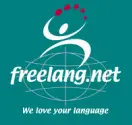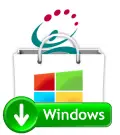| Freelang dictionary |
| Other Freelang resources |
| Sponsored Links |
Freelang Mongolian-English dictionary
| Related dictionaries |
| We have many more Mongolic languages for you, including Buryat and Kalmyk, but also Yugur, Daur or Dongxiang. |
| Live from the Blog |
|
There are more sheep than people in Mongolia. The population of Mongolia numbers less than 3 million, making it one of the lowest densely populated countries in the world. Mongolia has a large mass area as it is the 18th largest country worldwide. Large tracts of land are arid and unproductive, which lives only small portion of the land for agricultural activity. Most of the tribes that live in the region are nomadic or semi-nomadic. During winter, the ice cream vendors sell [...] |
![]()
Mongolian (or Mongol) is spoken by about 6 million people, in Mongolia and Inner Mongolia. Related languages include Kalmyk and Buryat.
Features of this dictionary
Download our free dictionary (for Windows or Android) and browse both the Mongolian-English and the English-Mongolian lists. Look up a word, add or modify an entry, and learn words at your own rhythm from a personal learning list. Click here to learn more about the features or scroll down to download the program. An online version is also available, so you can browse the dictionary without downloading it.
Features of this dictionary
Download our free dictionary for Android! Browse the wordlists, look up words and practice your vocabulary at your own rhythm. An online version is also available, so you can browse the dictionary without downloading it.
Word list information
This dictionary was made by Renato B. Figueiredo.
List status: © Renato B. Figueiredo
Mongolian > English: 6,650 words
English > Mongolian: 2,844 words
Last update: March 21, 2014
First upload: January 7, 2008
Download
1. Read and accept the terms of our copyright notice
2. Click here to download the program (2.21 mb)
3. Click here to download the Mongolian word list (513.72 kb)
4. Double click on each file and install in suggested folder.
Other Freelang resources
We have more than dictionaries and translation! Check out our collection of common expressions translated in all languages, test your knowledge with our quizzes about languages, or learn more about language families. To stay in touch with us, read our blog about languages and follow us on Facebook.






